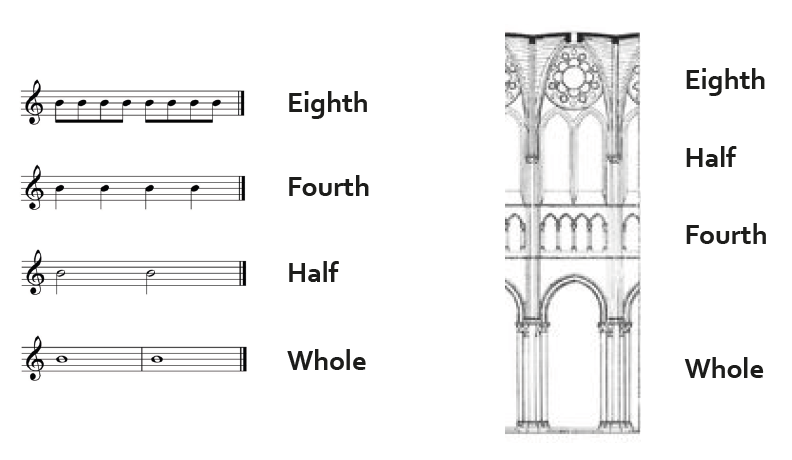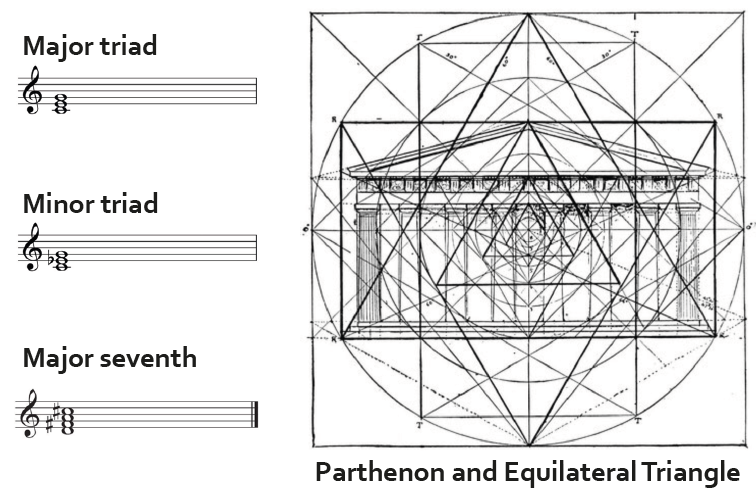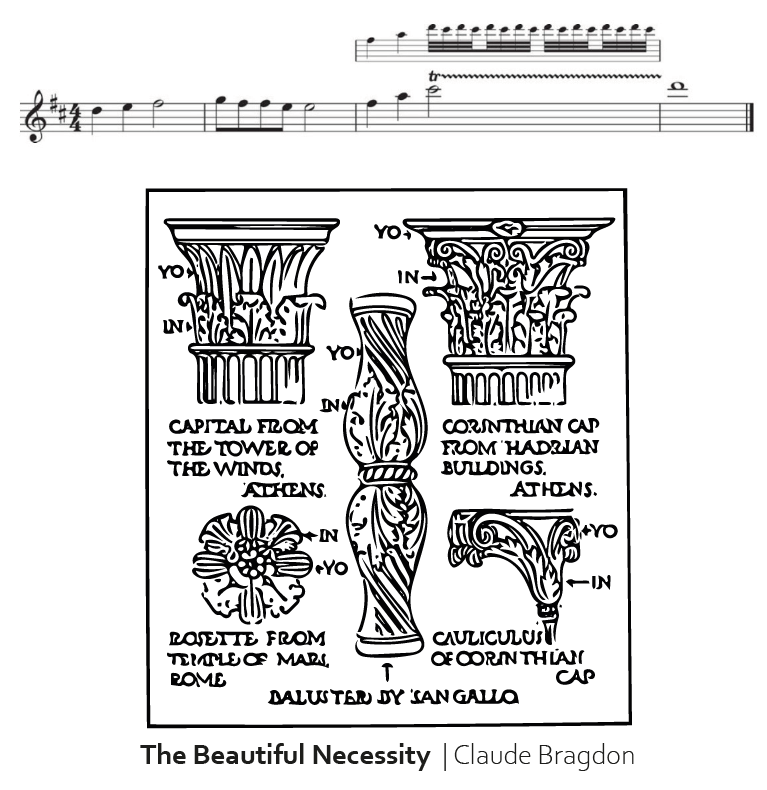Shared vocabulary
Exploring the meaning of shared vocabulary within the fields of architecture and music creates a better understanding of how deep the analogies between them go.
Could a musical rhythm be interpreted into an architectural rhythm? And could architectural volume be interpreted into musical volume?
I aim to explore how the shared vocabulary could be used as a framework within which architecture could be analysed and experienced through a musical lens. I also want to investigate whether the framework can form a method for integrating music in my own design process.
Five terms found in the vocabulary of both music and architecture have been chosen to be included in the framework. Other existing terminology has been excluded for different reasons. Some were difficult to use in a way that added value, while others, like repetition and sequences, can be automatically integrated in other terms when needed.
DEFINED VOCABULARY
Rythm; Harmony; Volume; Ornamentation; Movement
Read more about each of the terms in the chosen vocabulary below!

RHYTHM
Rhythm in music is a regular, recurring pattern, strongly connected to time. The beat is the basic unit of time in music, and rhythm is identified by including a specific number of beats the between measures (or bars) on the note sheet.
In classical architecture, the notiont of rhythm has often been linked to the same concept as rhythm in music, using columns and arches to create the same sort of pattern. Architectures sence of rhythm has since developed in a more free direction. Within architecture, rhythm can also be experienced in time as we walk through a space or along-side a façade. It can also be experienced visually, as defined patterns with a specified rhythm.


HARMONY
In music, harmony is a noun. When several tones are played simultaneously, they become a harmony. Whether they sound harmonious or not is a different matter – it is a harmony either way. The harmony is centered around relations. The relations between different pitches, or tones, is what gives the harmony its characteristics. There are systems in place to help us define harmonies, distinguishing between triads and sevenths, majors and minors etc.
The discourse on harmony within architecture is often related to mathematical principles, where geometrical shapes like for instance circles, squares and equilateral triangles play important roles. Here as well, it is the relation between different architectural artifacts that is of the essence. When organised in line within the logic of geometrical principles, we perceive a composition of artifacts harmonious. Note that harmony in architecture is used as an adjective, describing a design.


ORNAMENTATION
In both music and architecture, ornamentation is used for features
that do not have an apparent function, but is there to enrich the
output and make it more pleasing to the eye or the ear. In architecture,
it can refer to patterns on surfaces, volutes on pillars or stick style
carpentry. In classical music it can be for instance a trill, or in modern
music a wail.


MOVEMENT
Movement is a somewhat diffuse and unregulated term in both architecture and music but nevertheless very important in the aim of directing emotions and behaviour in relation to the music or built structure.
In music, it can be related to tempo, where the same beat and harmony can be accomanied with shifts in how fast the music is performed. But the music can also be designed in a way that gives the listener a feeling of moving forward without neccessarily changing the tempo. Using triols (playing three tones over two beats) can be one such method – the tempo is intact but feels slightly on the move.
In architecture, we can perceive movement in a space that is directed, where we experience a starting point and a route towards another point in the space. The route can be physical, with the purpose to move people from one spot to another, but it can also be focal, directing our focus in one direction and drawing our attention there.


VOLUME
Volume in music is concerned with how strong or soft the music is performed or listened to. When listening to recorded music, the listener can regulate the volume to suit the occasion. When music is performed or produced, the variations in volume over time is referred to as dynamics. The dynamics are described both with symbols and words, as instructions for the performer. It is an adjective, describing the qualities of a particular sequence of the music.
In architecture, volume is a noun. We use the term volume to describe a cohesive mass, but it says nothing about the characteristics of that mass. In order to give it characteristics we need to add adjectives. We refer to them as the larger or smaller volume, the cylinder shaped volume, the massive or perforated volume etc.
